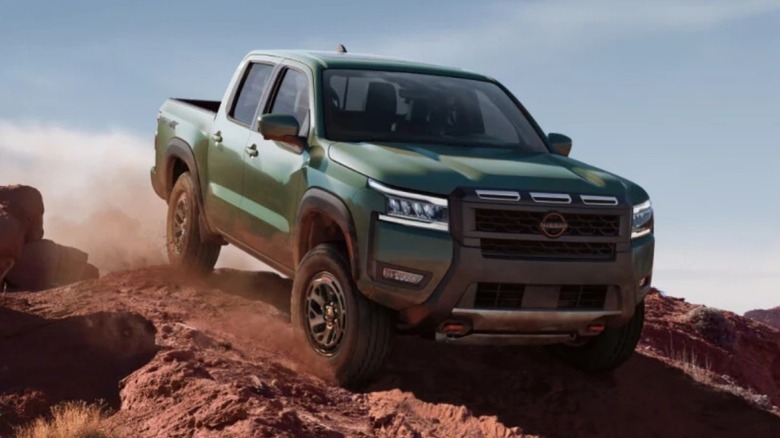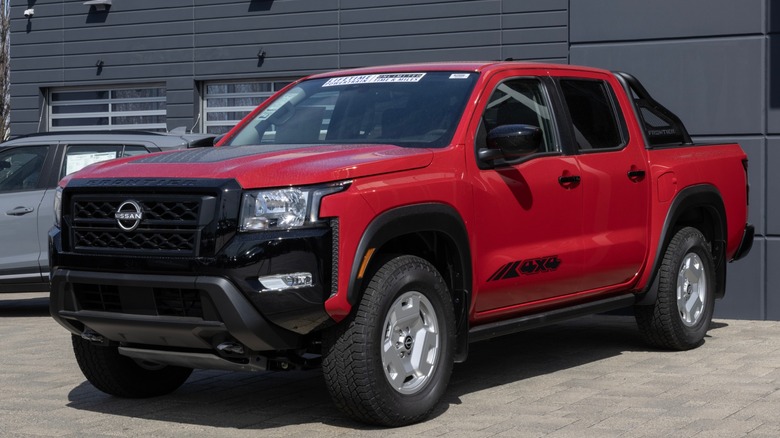Common Problems With The Nissan Frontier, According To Owners
The Nissan Frontier is a midsize pickup truck that competes with the likes of the Honda Ridgeline, Chevy Colorado, GMC Canyon, Toyota Tacoma, and Ford Ranger. Like the last four of the other trucks listed, the Frontier uses body-on-frame construction rather than the unibody construction found on the Honda Ridgeline.
The Frontier debuted for the 1998 model year, with 2005 marking the start of second generation and the third-gen Frontier entering the market for 2022. The Frontier headed our list of the best looking Nissan trucks ever designed, but that doesn't mean it's not without its issues. Nissan Frontiers produced for the 2024 model year were subject to three National Highway Traffic Administration (NHTSA) recalls. One was for improperly aimed headlights, another was for a suspension issue that could result in loss of driver control, and the third was with regards to a faulty driver's side airbag. In addition, many customers have logged complaints related to issues with the check engine light, engine coolant mixing with transmission fluid, and engine noises.
Some Frontier owners reported mixing of engine coolant and transmission fluid
The most common owner-reported Nissan Frontier problem received by RepairPal involves illumination of the check engine light (CEL).This light is part of the Frontier's on-board diagnostics system, and codes can be pulled with a scanner or by using one of these alternate OBD code reading methods. Common causes for CEL illumination include faulty fuel-level sensors, failed EVAP (evaporative emission control system) canister vent valves, and clogged EGR (exhaust gas recirculation) valves.
Many Frontier owners said the engine coolant and transmission fluid in their trucks had gotten mixed together. This happens when the transmission fluid cooling chamber of the radiator fails, leaking transmission oil into the parts of the radiator that circulate engine coolant and vice-versa. The primary concern is damage caused to the automatic transmission as the thinner engine coolant circulates through it.
The two most common owner-reported engine problems are noises from the front of the engine and the engine stalling or not starting. The strange whirring or buzzing noise from the front of the engine often stems from excess slack in the engine's timing chain assembly. This repair includes replacing the timing chains and tensioners and performing a complete engine oil change to remove any debris from the oil pan. The engine stalling or not starting condition often results from a rusted or seized distributor shaft, and is easily remedied by replacing the distributor.

